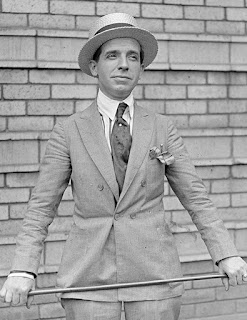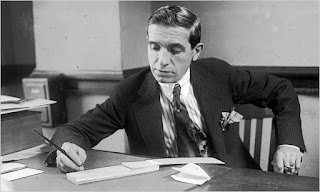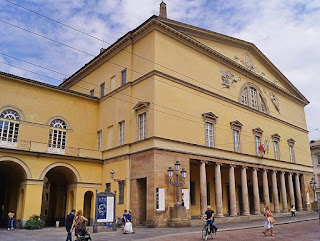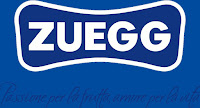Artist in demand from European royalty
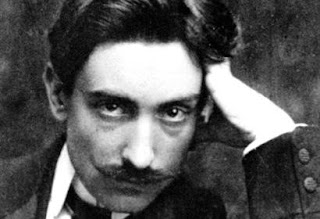 |
Pietro Canonica was well known for creating busts, statues
and portraits for the monarchy and nobility across Europe |
The sculptor Pietro Canonica, who was also a proficient painter and an accomplished musician but who found himself most in demand to create busts, statues and portraits for the royal courts of Europe, was born on this day in 1869 in Moncalieri in Piedmont.
Canonica’s ability to create realism in his work, bringing marble sculptures almost to life, resulted in an endless stream of commissions, taking him from Buckingham Palace in London to the courts of Paris, Vienna, Brussels and St Petersburg.
He was highly skilled in equestrian statuary and after the First World War was commissioned to create many monuments to the fallen, which can be seen in squares around Italy to this day.
Canonica’s mastery of Naturalism and Realism were the qualities that set him apart, exemplified nowhere with such stunning effect as in his 1909 work
L'abisso -
The Abyss - which depicts Paolo and Francesca, the ill-fated lovers from
Dante’s
Inferno, locked in their eternal punishment, clinging desperately to one another with fear in their eyes, her fingers digging into his back as the vortex in which they are trapped drags them towards their fate.
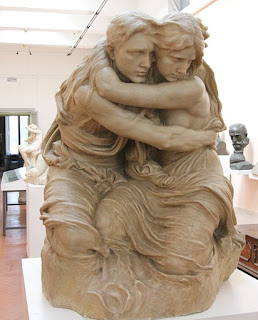 |
A master of Realism, Canonica produced some
extraordinary works, such as L'abisso (The Abyss) |
His depictions of female figures, in particular, were notably lifelike.
Canonica’s precocious talent saw him begin an apprenticeship at the age of 10 and be admitted to the
Accademia Albertina di Belle Arti di Turin the following year. His depictions of Naturalism and Realism were unusual for the time.
He was regularly commissioned for funerary works in the early part of his career as noble and aristocratic families sought grave markers that exuded emotion and tenderness.
He moved in 1922 to Rome, and participated in important national and international exhibitions in Milan, Rome, Venice, Paris, London, Berlin, Dresden, Monaco, Brussels and St. Petersburg. He created portraits and commemorative works with a passion his clients appreciated.
He took commissions, too, from as far afield as Turkey, Egypt, Iraq and Bolivia in South America.
Canonica became professor of sculpture at the Accademia di Belle Arti di Venezia in 1910 and later at the Accademia di Belle Arti di Roma. He was one of the first to be granted membership of the Royal Academy of Italy in 1929.
His religious subjects were among his most successful works, reflecting his characteristic sensitivity and sense of sorrow. His
Testa di Cristo (Head of Christ), which he exhibited in Naples in 1922, shows Christ with a raised shoulder, lowered eyelids and slightly open mouth as subtle indications of his suffering.
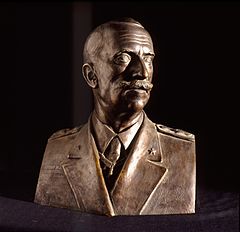 |
Pietro Canonica's bust of the Italian
king, Victor Emmauel III |
Deeply saddened by the destruction of his work in Russia by the Bolsheviks in 1918, Canonica found his reputation devalued somewhat by the collapse of the monarchy and the defeat of Fascism, having been associated with both.
However, in 1950, the Italian president
Luigi Einaudi nominated him life senator for his outstanding artistic achievements.
Much of his work nowadays is preserved in the
Museo Pietro Canonica in the Villa Borghese in Rome, in a building known as the Fortezzuola, which was given to him by the Rome city authorities to restore after a fire had curtailed its use as administrative offices in 1919.
Originally used for the breeding of ostriches, peacocks and ducks for the Borghese family to hunt, it is notable for the medieval style castellated walls designed by the architect Antonio Asprucci. Canonica, who converted the stables to accommodate his work, was told he could live there so long as his collections were ultimately donated to the city.
In addition to sculpting skills, Canonica was also a talented musician, composing several operas and other works.
As well as in the Museo Pietro Canonica, examples of Canonica’s sculpture and statuary around the world include his bust of King Edward VII at Buckingham Palace, his Monument to the Republic in Taksim Square in Istanbul, Turkey, where he also sculpted several statues of the revoltuionary statesman Mustafa Kemal Ataturk, monuments to Popes Benedict XV and Pius XI in the Vatican and to King Faysal I of Iraq on horseback in Baghdad.
He died in 1959 in Rome at the age of 90.
 |
The Castello at Moncalieri, a former residence of
Victor Emmanuel II, is now a Carabinieri college |
Travel tip:
Moncalieri, where Canonica was born, is a town with a population of almost 58,000 people. About 8km (5 miles) south of Turin, within the city’s metropolitan area, it is notable for its castle, built in the 12th century and enlarged in the 15th century, which became a favourite residence of King Victor Emmanuel II and subsequently his daughter, Maria Clotilde, and is listed among the World Heritage Site Residences of the Royal House of Savoy. The castle now houses a prestigious training college for the Carabinieri, Italy’s quasi-military police force.
 |
The Tempio Esculapio by Antonio Asprucci is a feature
of the Villa Borghese Gardens in the centre of Rome |
Travel tip:
The
Villa Borghese Gardens is among Rome’s largest public parks. The gardens date back to 1605, when Cardinal Scipione Borghese, nephew of Pope Paul V and patron of the sculptor and architect Gian Lorenzo Bernini, began converting a former vineyard. The park also includes the Galleria Borghese, built in 1613 for Cardinal Borghese to display his magnificent art collection. The gallery now houses masterpieces by Caravaggio, Titian and Lotto as well as sculptures by Bernini and Canova. To visit the gallery it is necessary to reserve tickets. For details visit
www.galleriaborghese.it
More reading:
La Pietà - Michelangelo's masterpiece
Luigi Einaudi, the politician and winemaker who was Italy's second president
Pietro Bracci, sculptor of the Trevi Fountain
Also on this day:
1773: The death of architect Luigi Vanvitelli, designer of the Royal Palace at Caserta
1926: The birth of movie actor Cesare Danova
1930: The birth of cycling champion Gastone Nencini
(Picture credits: Moncalieri Castle by Gianni Careddu; Tempio Esculapio by Jean-Christophe Benoist; via Wikimedid Commons)
Home








